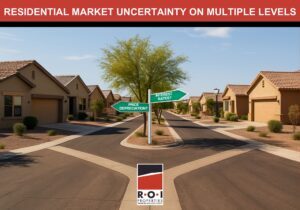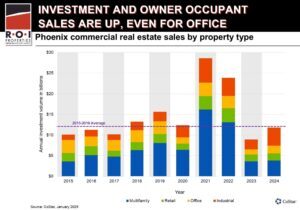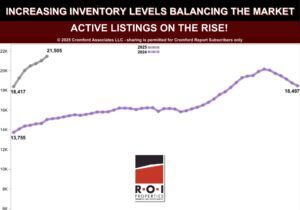
As the real estate market improves – and the supply of investment properties declines – sale-leasebacks are making a comeback. In simplest terms, a sale-leaseback is a transaction in which an owner sells a property and then leases it back from the buyer. The buyer acquires the property with a long-term tenant and income in place; the seller’s profits from the sale are typically used for debt relief, to improve or expand operations, or to diversify investments and holdings, while retaining possession and use of the property. The prior seller now the new tenant enters into a net lease, paying rent as well as all of the property’s operating expenses. The landlord and new owner receives a fixed rental payment, net of all property expenses.
While sale-leaseback properties occupied by credit tenants command the best prices on a per-square-foot/lowest capitalization basis, real property occupied by tenants with lesser or even troubled credit is in high demand—and may provide an alternative to bankruptcy, foreclosure or insolvency.
As a result, sale-leaseback transactions have become a compelling solution for both companies and investors in today’s economic environment. For a corporate owner, a sale-leaseback provides access to untapped equity, and enables them to recapitalize their operations and direct proceeds into their core business. Buyer/landlords garner a long-term income stream, with an asset that has little or no management responsibilities.
Considering investor appetite for net real estate investments, and the high prices/low cap rates that such investors are currently paying for corporate-leased real estate assets, there is little rationale for companies to own their own real estate assets.
Advantages: The Owner/Occupier’s Perspective
Sale-leaseback transactions, whether by investment-grade (based on a credit rating from a nationally recognized statistical rating organization) or below-investment-grade owner-occupant companies, are compelling for the following reasons:
- Reallocation of Capital: Sale-leasebacks allow capital to be freed up for a variety of uses, including paying off debt and infusing it back into operations, to provide for continuing operations, payroll, inventory purchases, expansion or diversification.
- Retention of Control of Property: In a sale-leaseback, sellers can convert otherwise illiquid assets into working capital, while controlling the terms of future occupancy, including initial and renewal terms, rental rates, maintenance responsibilities, occupancy terms, restrictive access, appearance, etc. The typical sale-leaseback investor is a passive investor who wants no day-to-day involvement with the property, and prefers to let the corporation continue to manage it exactly as they did when they owned it. The corporation controls the property in all important operational aspects, including a high level of autonomy with regard to interior and exterior capital improvements and alterations.
- Balance Sheet Improvement: The elimination of debt/payment of creditors may improve the seller’s financial ratios and margins. More importantly, the sale may cure a non-monetary default with the owner’s original lender, since the owner may be in default under its financial-ratio covenants.
- Financing Alternative: For companies that are eligible, traditional mortgage financing is typically 65-70 percent. A company that has a tainted balance sheet may find that equity requirements increase, or that the interest rate paid for such capital will increase significantly. A sale-leaseback can offer a cash infusion, interest free, at 100 percent of the value of the property.
- Transfer of Risk: A sale-leaseback can transfer the risk of an uncertain real estate market to a new owner, while letting the seller (who becomes the tenant) achieve current maximum value. Note that, while there is high demand and a robust investor base for these types of real estate transactions now, it is difficult to know how long this interest/appetite will last.
- Premium Pricing: According to “Sale-Leaseback Transactions: Price Premiums and Market Efficiency,” in the Journal of Real Estate Research, a sale-leaseback property on average may sell for a premium of 13 percent compared to non-sale-leaseback properties. Research indicates that this is due to a structured lease and lack of vacancy and tenant turnover. For transactions with strong tenant credit, long-term lease terms, and good real estate fundamentals, pricing has returned to pre-recession levels. For transactions with lower-credit tenants, the investor buyer base thins; these transactions are still viable, however, and the buyer base is still active. Given the oversupply of investment capital and a lack of good investment opportunities, we expect to see investors pursuing deals with owners and tenants with lesser credit or less stable financials.
- Retention of Control & Continuity in Operations: Sale-leaseback transactions allow the business owner to remain operating a business, in a familiar site, over the long term. The business avoids having to relocate, and eliminates the need to push their customer base, vendor base, and employee base to a new location.
Sale-leaseback History & Volume
The sale-leaseback market fell on tough times during the downturn, as did commercial real estate in general. According to CoStar, at the beginning of 2008, Metro Phoenix market pricing for owner-occupied office, industrial and retail product properties (8,000 square feet and less) averaged $252 per square foot. Prices steadily declined, reaching $84 per square foot in Q1 2012. Since then, pricing has appreciated significantly, with many transactions landing in the $375-500 per square foot range for tenants such as Filiberto’s, Golden Corral, Denny’s, Dairy Queen, Jack in the Box and Arby’s. Tenants such as Carl’s Jr., Jiffy Lube and Cane’s garner up to $1,000 per square foot, while Starbucks and Oregano’s may sell for more than $1,000 per square foot Although sale-leasebacks are currently most common for retail properties, they are also becoming more common for office, industrial and special-use properties.
A few case studies follow, with pricing analysis:
With current, average lease rates down 30 percent from 2008 averages (according to CoStar), sale-leasebacks provide an opportunity for both investors and owners/prospective tenants to capitalize upon the market dynamics. From the investor’s perspective, pricing is low, and there is appreciation momentum underway. To a property owner considering a sale-leaseback, it’s an opportunity to recapitalize their business while taking advantage of appreciated value, market demand, low supply and low lease rates.
Determining Viability
Whether a property and/or property owner is appropriate for a sales leaseback transaction begins with an evaluation of the real estate asset; that process includes determining a range of fair-market-value lease rates as well as per-square-foot values for the proposed sale property. Once the range of real estate values is determined, based on appropriate market rents and sales prices, the credit risk is factored into the valuation. For institutional grade tenants such as Walgreens or other corporate-backed leases and operations, an appropriate cap rate may be under 5 percent, depending upon location, age of the building, etc. For a franchisee-operated business, such as Burger King, Sonic, Denny’s, Jiffy Lube, Arby’s or Dairy Queen, valuation will depend upon the strength of the franchisor/franchisee relationship and the overall health of the business. The emphasis is on the prior 3 to 5 years of financials, as well as current financials.
Note that sale-leasebacks can also be appropriate for non-franchised or single-location businesses, including industrial buildings and corporate headquarters buildings. The credit/financial state of the owner/proposed tenant will weigh heavily on the assignment of an appropriate capitalization rate, which in turn impacts the pricing of the asset and the buyer pool.
A comprehensive valuation will equip the property owner with an understanding of whether a sale-leaseback is appropriate, and if it will give them the sufficient capital to avoid bankruptcy.
Conclusion
The inherent benefits of sale-leaseback transactions will continue to render these transactions viable tools for raising equity for any corporation that desires or needs to focus capital on its core business, pay down debt or diversify its interests. Robust investor interest in single-tenant sale-leaseback assets has led to rising values on such assets, and making their sale, with or without strong credit, viable. We expect to see sale-leaseback transactions continue to increase in volume and viability over the next few years, making these transactions an excellent alternative to bankruptcy, foreclosure and insolvency.










